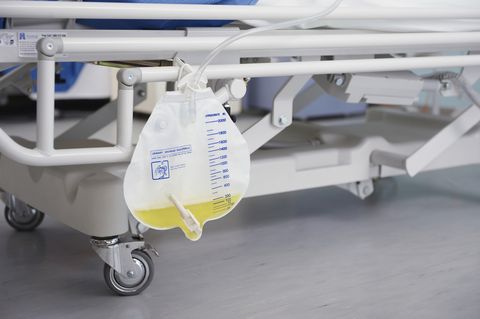
A 52-year-old United States veteran died from blood poisoning due to an incorrectly inserted catheter, according to a lawsuit filed by his family.
Gilbert Harris had multiple sclerosis and a traumatic brain injury; the lawsuit states he was visiting a VA urology clinic in Kansas City for neurogenic bladder, a common complication of MS, the Kansas City Star reported. The condition makes it difficult for patients with brain, spinal cord, or nerve problems to control their bladders.
VA staff changed Harris catheter at the facility, according to the lawsuit — but by evening, when he returned to the nursing home where he lived, he was “noted to have a fever and large amounts of blood and clotting at the end of his penis.” He was taken to the hospital, where he was diagnosed with a urinary tract infection and sepsis, a complication from the infection.
According to the lawsuit, a CT scan “revealed that the Foley catheter with balloon inflated within the penile urethra” — not in Harris’ bladder, where it was supposed to be. Harris died of septic shock on May 16.

Getty Images
Roughly one-third of Americans have urinary incontinence, and men with prostate problems are particularly at risk. Though not all people with bladder issues require catheters, here’s what you need to know if you end up needing one.
What is a catheter?
Catheters are used to provide or remove fluids from your body. If you have trouble peeing, a urinary catheter would remove urine for you through a thin tube. They can be used in guys who have prostate issues, surgical patients, men who can’t control their bladders, or those who aren’t able to pee for other reasons.
What are the different types of catheters?
There are two main types of catheters: urinary and intravenous. The first removes urine in those with bladder problems. The latter, also known as an IV, delivers fluids and medicine into your bloodstream.
Within urinary catheters, like Harris’, there are a several used:

Getty Images
What are the risks and side effects of catheters?
Urinary tract infections are common among patients with catheters, especially in people with Foley catheters. However, infections caused by incorrectly placed catheters are more rare, and can be prevented if medical staff monitors urine output before and after placing the catheter.
If you ever find yourself in need of a catheter and are worried about potential infection, you can do one thing to reduce risk: drink plenty of water.
As you may have guessed, wearing a catheter isn’t the most comfortable experience. Some people may experience bladder spasms — which feel like stomach cramping — caused by the bladder attempting to squeeze the balloon out of your body. As a result of these spasms, the catheter may leak.
Source: Read Full Article
